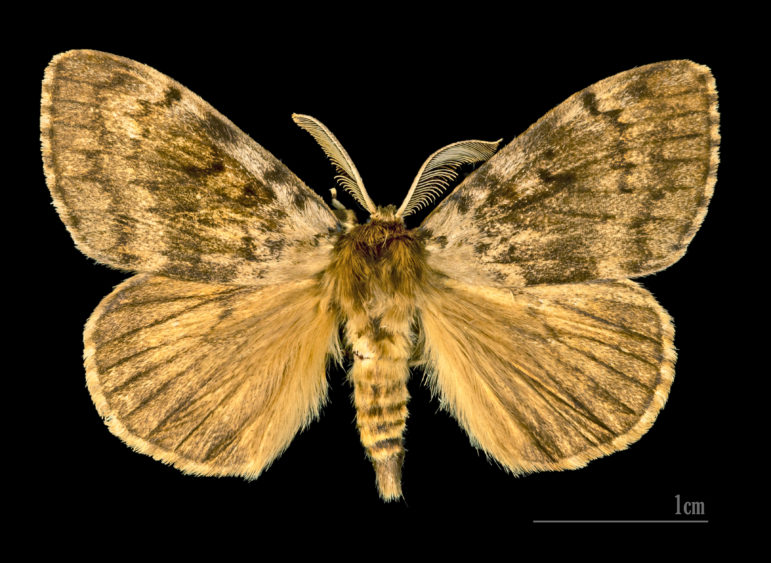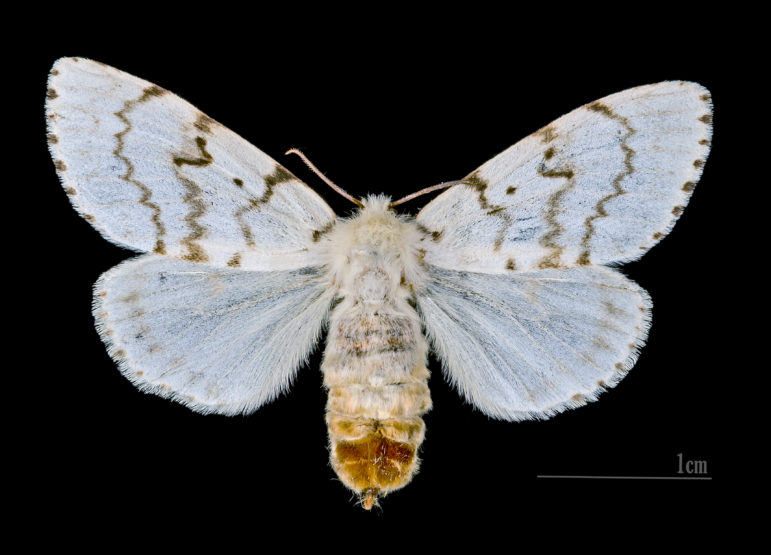ANNAPOLIS, Md. – The Entomological Society of America (ESA) announced earlier this month that they would be discontinuing the use of the common names for two species, Lymantria dispar and Aphaenogaster araneoides, commonly referred to as the “gypsy” moth and the “gypsy” ant.
“Words matter, and what we call something matters,” said Chris Stelzig, executive director of ESA, in an interview with NPR.“And by the former name for Lymantria dispar, it really was very hurtful to the Romani people.”

Male, Lymantria dispar, dorsal side – Image credit: Didier Descouens – CC BY-SA 4.0
The term “gypsy” is recognized as a derogatory and disparaging reference to the Romani people. The Romani make up the largest ethnic minority in Europe and continue to face issues of discrimination.
“The casual and reflexive manner in which anti-Romani discrimination is perpetuated throughout many countries and cultures of the world has long been an area of popular supremacy left to the wayside of discourse, change, and growth,” according to Theanos Thrax, who is part of an extended Kalderash Romani family.
Thrax highlighted the many problematic ways the Romani have often been portrayed. “From racist stereotypes in popular film, fiction, fantasy role-playing, and even counter-culture fashion, the Western world has made clear its commitment to racist appropriation, misrepresentation, and apologist disposition toward ongoing and historic atrocity, genocide, and identity erasure, of and around the Romani peoples.”
The impact that changes to terminology and the names used, particularly within the fields of science and amongst academics may seem like a small step, but the shift to replace names that have derogatory meanings have the potential to be far-reaching and help to remove stigmas and the misconceptions that have fueled discrimination and persecution of an entire population.

Female Lymantria dispar, doral side – Image credit: Didier Descouens – CC BY-SA 4.0
Pointing out exactly how racist and discriminatory the common name for both species really are, Thrax said, “Changes of this sort, within the institutions of academia and scientific classification, are foundational to increased awareness of these human rights issues. The insect species in question were named in an intentionally racist manner in reference to their invasive migration patterns, and general status as unwanted pests best treated with eradication, as these reflect the present and historically horrific supremacist dispositions of a majority culture population with regard to Romani peoples.”
The Better Common Names Project, which seeks to provide better communication between researchers and the community when it comes to the identification of insects, outlines their criteria on inappropriate or problematic names:
However, not all common names accepted over the past 120 years align with the goal of better communication, and some hinder it. Examples include (but are not limited to):
Names that contain derogative terms
Names for invasive species with inappropriate geographic references
Names that inappropriately disregard what the insect might be called by native communities
These problematic names perpetuate harm against people of various ethnicities and races, create an entomological and cultural environment that is unwelcoming and non-inclusive, disrupt communication and outreach, and counteract the very purpose of common names.
The ESA Governing Board approved new policies for acceptable insect common names in March of 2021. The new policies “bar names referencing ethnic or racial groups and names that might stoke fear; the policies also discourage geographic references, particularly for invasive species.”
“The purpose of common names is to make communication easier between scientists and the public audiences they serve. By and large, ESA’s list of recognized insect common names succeeds in this regard, but names that are unwelcoming to marginalized communities run directly counter to that goal,” said ESA President Michelle S. Smith, BCE in the ESA’s press release. “That’s why we’re working to ensure all ESA-approved insect common names meet our standards for diversity, equity, and inclusion.”
The ESA’s list of Common Names of Insects and Related Organisms dates to the early 20th century. Over the ensuing century, it has been expanded to recognize the common names for more than 2,300 insect and arthropod species.
This new change in policy is important since those names found on the common names list must be used by all members of the ESA in journal articles, presentations, at conferences, and on signage, as well on websites, social media, and for use in media articles. The removal of language that reflects pejorative meaning signals a move in the right direction and away from the biased language use of the past.
“Simply put,” said Thrax, “anyone who does not understand the significance and importance of changes of this kind, and the removal of racist slurs and caricatures as acceptable vestiges in popular society is part of the problem.”
The Wild Hunt is not responsible for links to external content.
To join a conversation on this post:
Visit our The Wild Hunt subreddit! Point your favorite browser to https://www.reddit.com/r/The_Wild_Hunt_News/, then click “JOIN”. Make sure to click the bell, too, to be notified of new articles posted to our subreddit.
